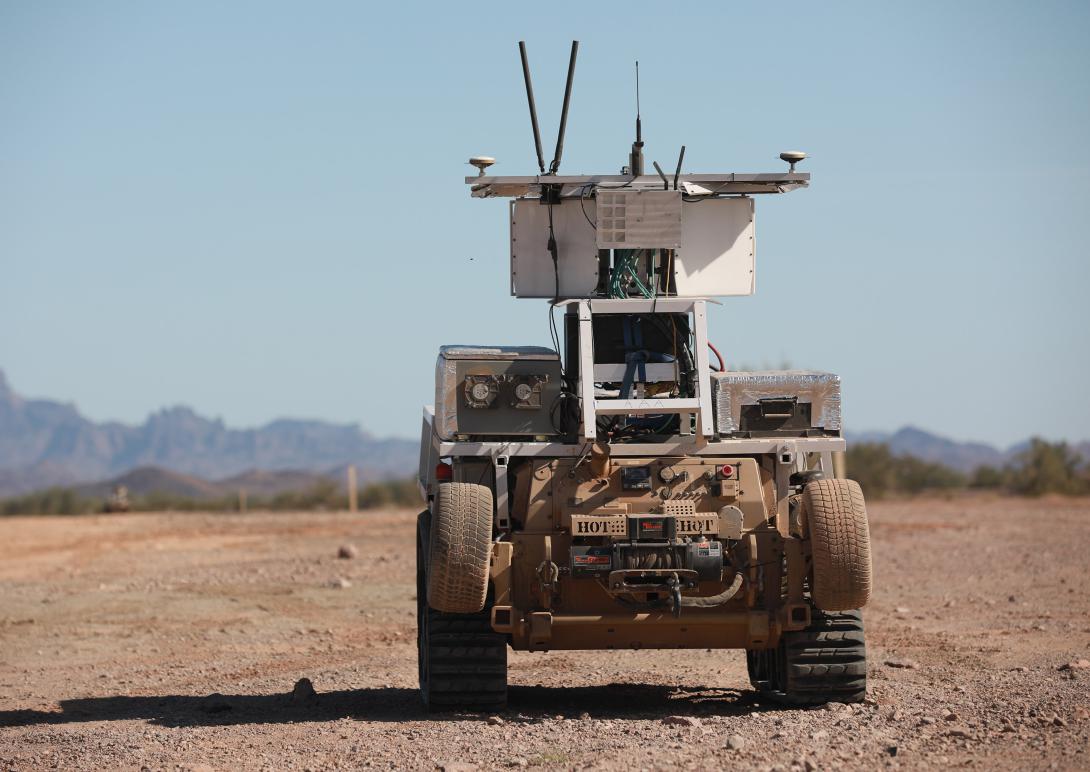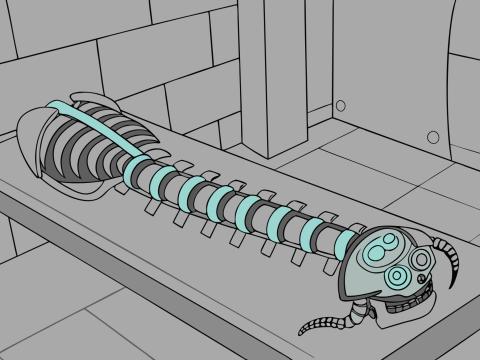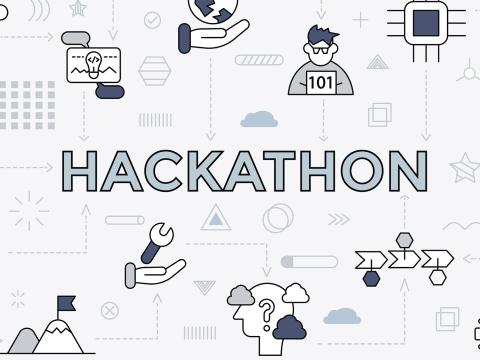On Point: Q&A With Stuart Young
Does RACER “resiliency” refer to the algorithm or the vehicle?
It’s resiliency for the algorithms. We call it the autonomy stack. There are a lot of potential challenges that the robot might encounter that it’s not seen before or been programmed for. Deep learning approaches have the problem of catastrophically failing when they’re outside of their training domain or faced with situations outside their training domain. We’re trying to avoid catastrophic challenges where the robot just does something that’s completely unexplainable when it encounters something new.
We also want to be able to learn as we travel so that we can get better and better as we drive in a certain environment. One example is if it’s really dry in the Mojave Desert—so out there at Bicycle Lake [at Fort Irwin, California], obviously, they don’t travel on all the time for environmental reasons—but it will be easy to drive on. It’s pretty hard-packed.
But if it rained like it did last week, it all of a sudden it turns to mush, and it’s much more difficult to traverse. So, you would want the system to automatically adapt to changing environmental conditions and not have to have a computer programmer say, “Hey, look, here’s our new parameters for the vehicle, because of this new environmental feature.” The vehicles, if they get themselves into something that they haven’t seen before, they still need to do intelligent things to get out of it like a soldier or Marine would.
How many experiments will they have participated in by program’s end?
Every six months, we experiment. We’ll have eight total experiments completed. We’ve done three, and we’re getting ready for number four. As we go into phase two, we are showing that this technology can be agnostic to what platform we want to put it on. We’ll be showing it on both vehicles as we progress through phase two.
So, it’ll be applicable to all kinds of ground vehicles—wheels or tracked?
That’s right. That’s our point. And we’re going to prove that through our experimentation.
Who are your potential transition partners?
On the Army side, we’re working primarily with the Next Generation Combat Vehicle Cross Functional Team led by Brig. Gen. Geoffrey Norman. Obviously, that’s part of Army Futures Command, so we’re working with Deputy Commanding General Ross Coffman. On the Marine side, we’re working with long-range fires and opportunities there for their NMESIS [Navy Marine Expeditionary Ship Interdiction System] program.
There are a few opportunities on the science and technology side, but those are the program of record opportunities that we’re pursuing.
Could you integrate One World Terrain for a mapping capability?
We’re agnostic to the specific map information we get. It really has to do with the resolution of the maps themselves and the elevation information. One World Terrain is one that we could certainly ingest. We’ve talked to the program office about that. We are not wedded.
As those are continuing to be in development, we can certainly ingest that as information. We have other sources of information we can also get. And just as the software algorithms that we develop in RACER are agnostic to what platform we run on, we also similarly are agnostic to what map information we would ingest.
Questions and answers have been edited for concision and clarity.





Comments